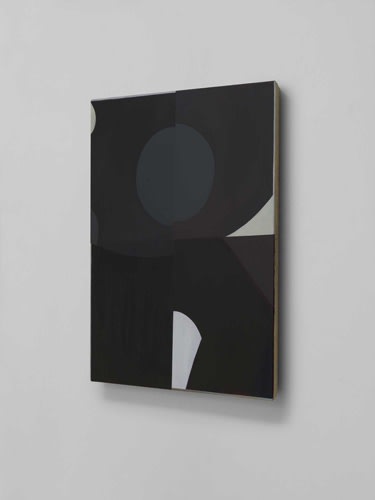In an early episode in Balzac’s The Unknown Masterpiece, the novella’s quixotic antihero, Frenhofer, is adding masterful corrective touches to a painting by Porbus for the benefit of the narrator, the young Poussin. “Look my boy, it is only the last stroke of the brush that counts; no one will thank us for what is underneath.” The history of modern art, it could be argued, is a riposte to such certitude. Abstraction, while often making the contradictory assertion that what you see is what you get — that the surface, in Oscar Wilde’s phrase, is to be penetrated at peril — actually trades quite aggressively in the values that have been circumscribed. Heroics of elimination and purification might be intimated physically in the form of pentimenti; or else, in works that achieve non plus ultra reductivism, they are conceptually implicit.
Beguiling, enticing even, as the paintings of Nathlie Provosty are, it took this viewer three visits to be convinced by the totality of the artist’s vision. On the first visit, a troika of large, dark canvases, each seven feet high, dominated this sumptuously austere gallery space: West, Gilles and Twice Six (all works cited, 2016). Their declarative restraint established pictorial subtleties with such calm authority that the scattered smaller canvases seemed like intrusive souvenirs or afterthoughts. On a second visit, however, taking on trust the monumental severity of the big three, the eye could adjust to the busier, tightly knotted smaller compositions. These seemed to apply the lessons of their larger counterparts — or, one could equally say, anticipated the breakthroughs, for why assume that less always follows more? Inevitably, the fuller lexicon of colors and textures in the smaller works eclipsed what might seem like neat contained solutions in the bigger ones. But the experience of both visits yielded such satisfactions as to demand a third, which in turn rewarded this devotee with a sense of synthesis. Degrees of reduction or addition seemed determined in each canvas by particularities of emotional ambition rather than mere strategies dictated by size.
The three larger paintings each present a U-shaped black form in glossy application against a matt ground of similar hue. As befits paintings that glide effortlessly over the retina yet draw the viewer back again, the shapes variously resemble a boomerang and a magnet. If the initial impression, from a distance, of black shape against black ground, might recall the reductive late paintings of Alberto Burri in Celotex, that was belied, on closer inspection, by Provosty’s subtleties of texture and composition. Process in these “black” paintings hovers between deletion and accretion. The eye quickly becomes attuned to the survival of obscured, subcutaneous shapes and zones, and indeed colors, without compromising the surface’s serenely achieved sheerness. In this respect, the enigmatic black paintings of Ad Reinhardt, with their cruciform substructures, inevitably come to mind, as do the contingent emerging complexity of Suzan Frecon’s irregular geometries. In Provosty’s case, in counterpoint to the play of glossy bent shape against allover matt ground, an off-kilter vertical axis serves to further destabilize monochrome finality, adding uneven slivers of exposed canvas to outer edges of the rectangle to give resulting shape to what would otherwise have been merely accepted as a given, a field. These are complicatedly simple pictures.
The smaller paintings could equally be viewed, therefore, as models or as elaborations; as studies or as clarifications. Their titles intimate states of contrast in relationship to each other: “Assonance,” “Dissonance,” “Consonance,” “Resonance.” The dislodging of the bisected rectangle (now on both axes) and the misregistration of its segments is more explicit — perhaps, indeed, axiomatic — than in the three big paintings. The coloring of different shapes, and more crucially the contrasts in tone of shapes of the same color caught in axial division, offer clues about what lies beneath that tarmac-like top coat in the “black” trio, or what could result from the evisceration of that surface. Tight busyness results, paradoxically, in greater legibility, although that can be questioned if what the viewer ends up reading was unintentional. In Consonance II, for instance, tapering shapes that could signify shading add the illusion of pictorial depth to an upside-down magnet shape; in Assonance, the fractionally dislocated curves assume a marching limb schematic (bringing to mind Don Voisine and the prints of Willard Boepple).
Ultimately, it is hard to say which body of work is richer. The smaller works are more traditional in their density and the larger ones more modernist in their singularity — they seem, respectively, to evoke avant-garde (pre-war) and institutional (post-war) phases in the history of abstraction. If so, it is the dynamic of the relationship of the two that makes this striking exhibition feel relevant in a moment where Provosty’s peers amongst younger abstract painters are too often driven towards the extremes of rhetorical neo-formalist statement and intentionally irresolvable open-endedness.
by David Cohen




